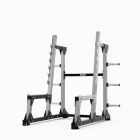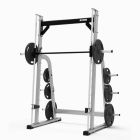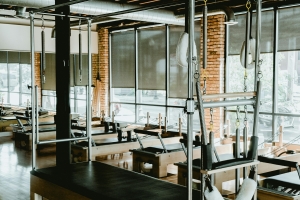How To Do Squats - All You Need To Know
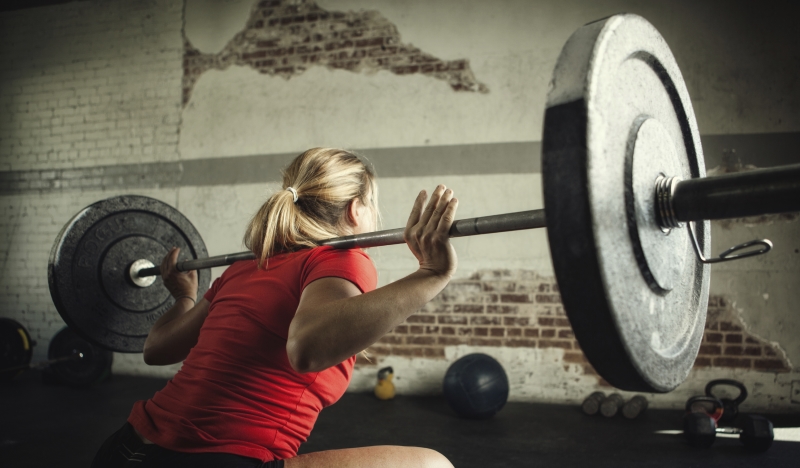
Should you use weights, and if so, what weights? Want to know how to do a squat and whether you should start with machines? What’s the best form? Here, we explore all you need to know about squatting.
Why Squat At All?
Being able to do a squat is hugely important to us as humans. Why? The main reasons are that it is "functional". We need to be able to squat to lift anything heavy, from children to shopping to changing a tyre. It builds muscles all over our body. It clearly focuses on the lower body muscle groups, but squatting triggers anabolic stimulation, which helps trigger muscle development throughout the body. Squatting also develops connective tissues in our knees and hips. This means that all our tendons and ligaments grow thicker and are less likely to tear when stressed. Squatting keeps you flexible, can help you burn fat and finally can give you a great-shaped butt!
Squatting in itself is quite a basic move, but the devil is in the details as to where you should position your toes, how far apart your feet should be and how much weight you should use. But let’s start with the feet.
Positioning of Feet
You may have been told different things over the years regarding the position of your feet. Do you have your toes facing forward in line with your hips, or facing out? Experts now seem to agree that the answer lies in your body and what it is you are trying to achieve. In terms of your body, if your hips naturally rotate out, you may find it more comfortable to have your toes pointed slightly out.
In terms of benefit, if your toes are slightly pointed outwards, then you can achieve a deeper squat, but if your toes point forward, then you can generate more power into the squat. Overall, it appears to rest upon how you feel comfortable and what you do with your toes when you walk. In summary, there is no right or wrong here; it’s all about what your feet and hips naturally do and what kind of squat you are trying to achieve.
How Wide Should Your Feet Be?
There are really three basic positions of width, medium, wide and narrow, and all play a role. Let’s start with the medium position.
This is where you squat with your hips shoulder-width apart. This is seen as the more athletic stance. The wider squat, also called the sumo squat, is where your toes are slightly turned out, and your feet stand outside of your hips. This is the stance you would use when carrying heavy weight, and it is also the best stance to really work the glutes. Finally, there is the narrow squat. The narrow squat occurs when the feet are narrower than the hips. This can be quite hard to perfect and can be tough if you experience any hip or ankle problems. In terms of which position to choose, bear in mind that the wide squat is best for building strength and muscle, and for athleticism, the hip width is best.
Using Weights When Squatting
The goblet squat is often the one that people start with when they first start squatting with weights. This is where you use a dumbbell, a kettlebell or even a medicine ball and hold it in front of your chest as you squat. Remember to keep your elbows in to get a good movement. The goblet squat is great for beginners because it stops you from leaning forward as you are holding the weight in front of you. For many people, this is the position they continue with, but if you want to add weight, then you will need to use other parts of your body, as your arms alone will only hold so much weight.
The shoulder hold is for many the next stage. This is where you hold either two dumbbells or two kettlebells on top of both shoulders. This way, you can use more weight than the goblet hold. One disadvantage, however, is that if you don’t get the technique right, then you can lean too far forward. Now let’s look at squatting with the barbell.
The back rack is where you hold the barbell on the upper back as you squat up and down. This can be a good way to add more weight to your squatting. You can either position the bar on the top of your shoulder or a few inches lower than this. Your hands should be facing forward along the same plane as the shoulders, with elbows pointing down to the ground. Using weights this way for squatting also works much of the back of the body as well, including the glutes, hips and hamstrings.
Then there is the front rack, which is a more advanced movement. This is where you hold the barbell in front of the body across the collar bones, resting on the deltoid muscles. Your elbows should point straight out. This is a good way to also work your core and quads.
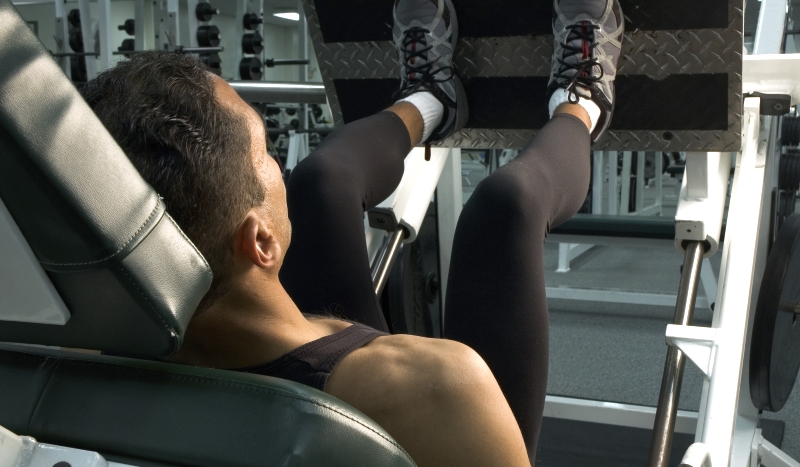
Ways to Perform Squats
As well as traditional Olympic bar with weights from a standing position, you can also perform squats in different body positions and even in different ways from a vertical position. A few examples include :
Standing - discussed here, the bar is across your shoulder, and you squat down and push back up.
One Leg Lunge - either with bodyweight, horizontal bar, dumbbells or kettlebells. Holding the weight, step forward and down using one leg, hold, then push back up to standing. Requiring less weight, this exercise introduces more difficulty, especially for the adjacent muscle group, as you need to think about posture, balance and control due to isolation. Just be careful not to overstep.
One Leg Lunge From A Step Platform - a variation of the lunge, this makes it even more difficult, not an exercise for the beginner.
Smith Machine - Using a machine with a straight bar where the bar is on sliders, so you only have to push with the legs and keep your position correct.
Plate Loaded Lying Leg Push - Lying on your back or at 25% to the floor, the weight sits over your hips and you push against gravity with your legs. This isolates the leg muscles and allows you to add more weight, because you are not using your bodyweight at all.
How Much Weight?
When you first start squatting, it is more important to get the basic squat move right. Remember to keep the weight on your heels and to keep that back as straight as you can as you come down. If you want to add weight, start with the goblet hold, as that is the safest way to keep good form when squatting. When that starts to feel too easy, then you may want to progress to the back and front squat racks. The key is to listen to your body and ensure that even if you are using weights, you are keeping good form, as that will prevent injury.
Common Squatting Mistakes
The most common squatting mistakes include not dropping down low enough. This will mean you don’t engage enough muscle groups. If you’re struggling to get down low, then take a slightly wider stance. Leaning too far forward is another common mistake. Remember to put weight on your heels, which will help keep your body upright. Descending too quickly can also cause injur,y particularly when you are carrying weight. Try to descend slowly into a squat, and then, if you want, explode with power when you return to standing. Finally, not warming up can cause big problems here, as it can cause injury to your joints and muscles. Always warm up first; it will also help you get lower into that squat.



